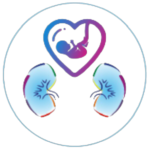Hypertension: Causes, Risk Factors, Symptoms, and Management
What is Hypertension?
Hypertension, or high blood pressure, is the force exerted by blood against the walls of the body’s major arteries as the heart pumps it. Blood pressure is measured using two numbers:
- Systolic Pressure: The pressure in arteries during a heartbeat (contraction).
- Diastolic Pressure: The pressure in arteries when the heart is resting between beats.
Hypertension is diagnosed when blood pressure readings consistently reach or exceed 140/90 mmHg on at least two separate occasions.
Hypertension: Causes, Risk Factors, Symptoms, and Management
Hypertension, also known as high blood pressure, is a chronic medical condition where the force of blood against the walls of arteries remains consistently elevated. Left unmanaged, it can lead to serious health issues such as heart disease, stroke, kidney damage, and vision loss.
Causes:
- Primary Hypertension: Develops over time due to genetic factors and lifestyle habits.
- Secondary Hypertension: Results from underlying conditions like kidney disease, hormonal disorders, or medication side effects.
Risk Factors:
- Age and family history.
- Poor diet (high salt intake).
- Sedentary lifestyle.
- Obesity and smoking.
- Stress and excessive alcohol consumption.
- Conditions like diabetes or high cholesterol.
Symptoms:
Often called the “silent killer,” hypertension may show no symptoms. Severe cases might cause:
- Headaches.
- Shortness of breath.
- Nosebleeds.
- Chest pain or blurred vision.
Management:
- Lifestyle Changes: Healthy diet, regular exercise, stress reduction, and quitting smoking.
- Medication: Prescribed antihypertensive drugs.
- Regular Monitoring: Check-ups to keep blood pressure within a healthy range.
Early detection and management are essential to prevent complications and maintain long-term health.




